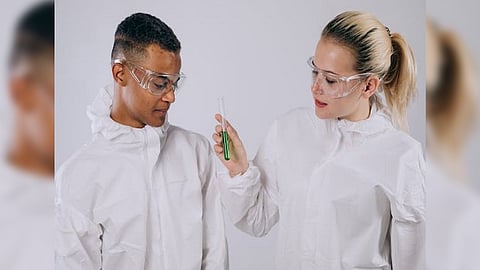

WASHINGTON: Organelles, which are made up of various protein and RNA fragments inside of a cell, are crucial for maintaining homeostasis, controlling ageing and development, and producing energy. Cells can differ in their organelles both across and within different cell types. Researchers can develop better therapies to cure a variety of disorders by better understanding cell function via the study of these distinctions.
Researchers looked at a particular type of stem cell with an intracellular toolkit in two papers from the lab of Ahmet F. Coskun, a Bernie Marcus Early Career professor in the Coulter Department of Biomedical Engineering at the Georgia Institute of Technology and Emory University. This was done to identify which cells are most likely to produce successful cell therapies.
In order to improve the treatment of sickness, Coskun remarked, "We are researching the positioning of organelles within cells and how they communicate." Our most recent research suggests using an intracellular toolset to map the bio-geography of organelles in stem cells, which might lead to more targeted treatments.
Creating the Subcellular Omics Toolkit
The first study -- published in Scientific Reports, a Nature portfolio journal -- looked at mesenchymal stem cells (MSCs) that have historically offered promising treatments for repairing defective cells or modulating the immune response in patients. In a series of experiments, the researchers were able to create a data-driven, single-cell approach through rapid subcellular proteomic imaging that enabled personalized stem cell therapeutics.
The researchers then implemented a rapid multiplexed immunofluorescence technique in which they used antibodies designed to target specific organelles. By fluorescing antibodies, they tracked wavelengths and signals to compile images of many different cells, creating maps. These maps then enabled researchers to see the spatial organization of organelle contacts and geographical spread in similar cells to determine which cell types would best treat various diseases.
"Usually, the stem cells are used to repair defective cells or treat immune diseases, but our micro-study of these specific cells showed just how different they can be from one another," said Coskun. "This proved that patient treatment population and customized isolation of the stem cells' identities and their bioenergetics organelle function should be considered when selecting the tissue source. In other words, in treating a specific disease, it might be better to harvest the same type of cell from different locations depending on the patient's needs."
RNA-RNA Proximity Matters
In the next study published this week in Cell Reports Methods, the researchers took the toolkit a step further, studying the spatial organization of multiple neighbouring RNA molecules in single cells, which are important to cellular function. The researchers evolved the tool by combining machine learning and spatial transcriptomics. They found that analysing the variations of gene proximity for the classification of cell types was more accurate than analysing gene expression only.
"The physical interactions between molecules create life; therefore, the physical locations and proximity of these molecules play important roles," said Coskun. "We created an intracellular toolkit of subcellular gene neighbourhood networks in each cell's different geographical parts to take a closer look at this."
The experiment consisted of two parts: the development of computational methods and experiments at the lab bench. The researchers examined published datasets and an algorithm to group RNA molecules based on their physical location. This "nearest neighbour" algorithm helped determine gene groupings. On the bench, researchers then labelled RNA molecules with fluorescents to easily locate them in single cells. They then uncovered many features from the distribution of RNA molecules, such as how genes are likely to be in similar subcellular locations.
Cell therapy requires many cells with highly similar phenotypes, and if there are subtypes of unknown cells in therapeutic cells, researchers cannot predict the behaviour of these cells once injected into patients. With these tools, more cells of the same type can be identified, and distinct stem cell subsets with uncommon gene programs can be isolated.
"We are expanding the toolkit for the subcellular spatial organization of molecules - a 'Swiss Army Knife' for the subcellular spatial omics field if you will," said Coskun. "The goal is to measure, quantify, and model multiple independent but also interrelated molecular events in each cell with multiple functionalities. The end purpose is to define a cell's function that can achieve high energy, Lego-like modular gene neighbourhood networks and diverse cellular decisions."
Visit news.dtnext.in to explore our interactive epaper!
Download the DT Next app for more exciting features!
Click here for iOS
Click here for Android